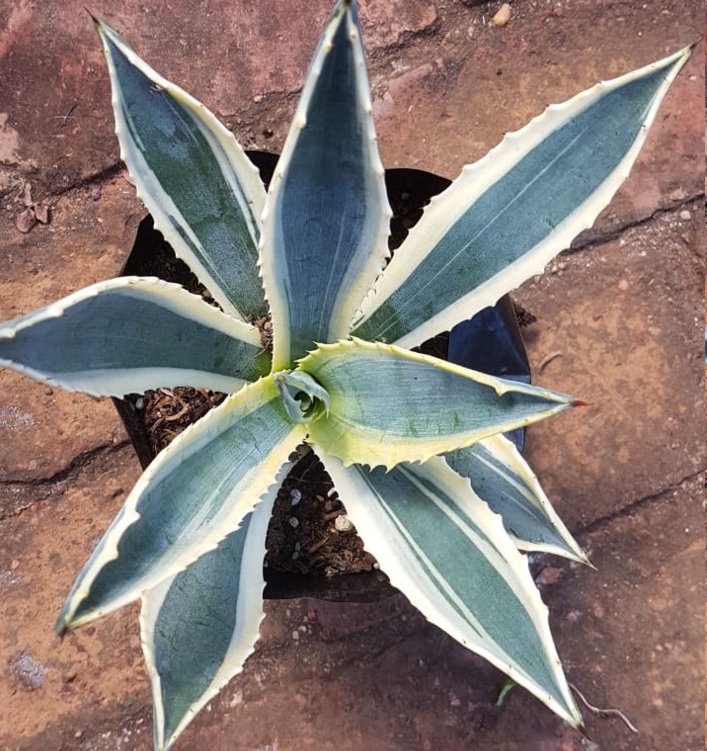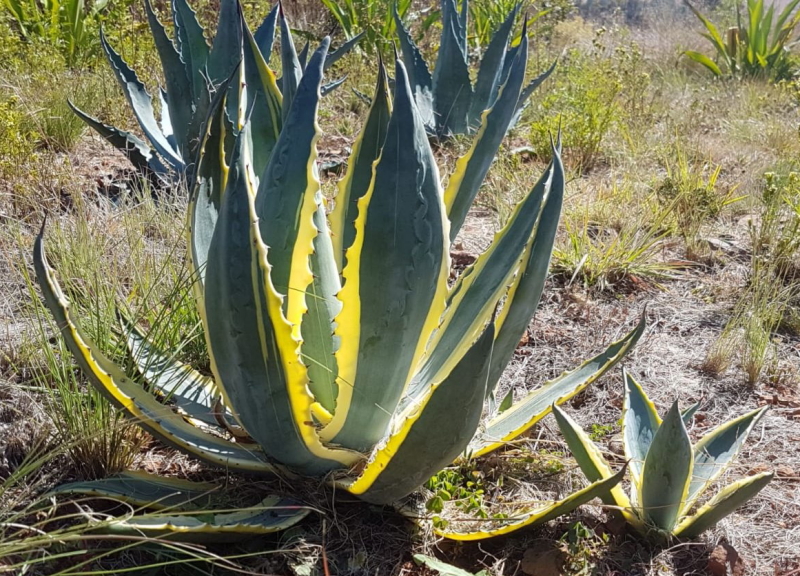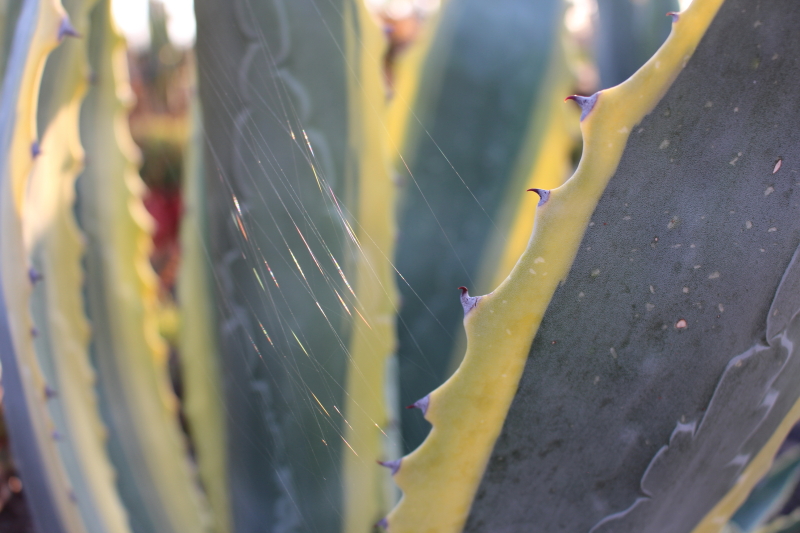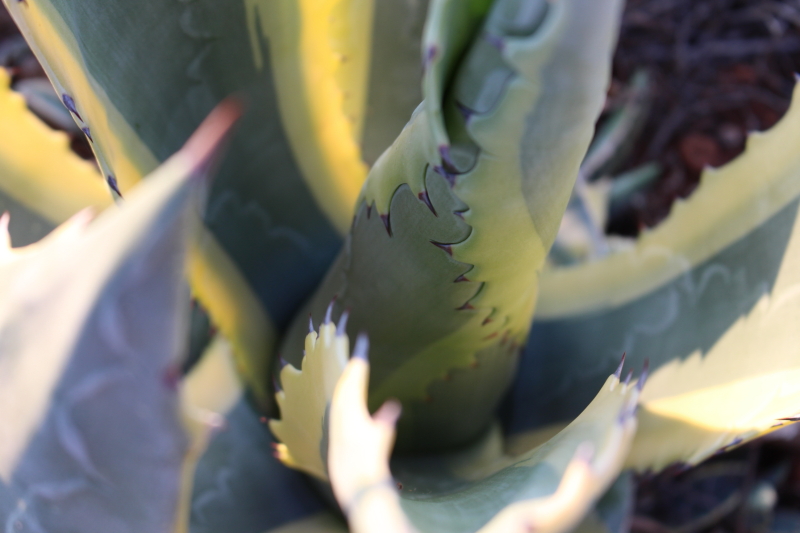Description
Agave americana ‘Marginata’ is a large, rosette-forming succulent with upright, slightly wavy leaves. The leaves are grey-green with spines along the cream to yellow margins and a dark brown terminal spine.
| |
| |
| 1.8 - 2.4 meters in diameter
|
Variegated cultivar of Agave americana
native to Mexico
| |
| After 10+ years (Monocarpic)
|
| Every two weeks in Summer,
Once a month in Winter
|
| Yes, the leaves sap may cause mild skin irritation.
|
Medicinal Properties
Antiseptic
The leaf sap has antiseptic qualities, helpful for topical treatments.
Anti-inflammatory and Antioxidant
Compounds in the leaves have antioxidant and anti-inflammatory properties.
Precursors of Corticosteroids
Hecogenin is one of the sapogenins found in leaves that can be utilized in the production of corticosteroids.
Traditional Medicinal Uses
Wound Healing
The sap from the leaves is applied topically to prevent infection in wounds and burns.
Gastrointestinal Issues
In parts of Africa, the leaf sap is consumed for its laxative and diuretic properties.
Cardiac Problems and Hypertension
South African traditional medicine uses the leaves to address heart conditions and high blood pressure.
Inflammation
The leaves are split, heated, and applied externally to relieve rheumatic pain.
Insecticide
The leaf sap is also used as an insecticide in some regions.
Precautions
Contact Dermatitis
The plant contains needle-like calcium oxalate crystals (raphides) that can cause contact dermatitis and conjunctivitis upon contact.
Pregnancy and Breastfeeding
According to RxList, it is not recommended to ingest agave during pregnancy or while breastfeeding.
Consult a Professional
Due to potential side effects and a lack of scientific data on proper dosages, it is crucial to consult a pharmacist, physician, or other healthcare professional before using agave medicinally.







